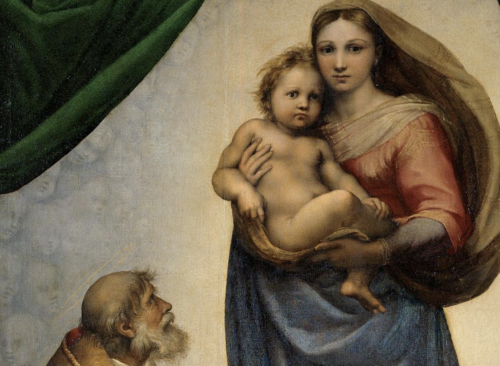Image Courtesy of Flickr.
With the recent mania surrounding AI and its capabilities both in creating art and identifying it, researchers are working to uncover hidden truths about Renaissance paintings. Experts believe they may have discovered concrete evidence of a previously unidentified Raphael painting.
Professor of Visual Computing Hassan Ugail has developed AI technology capable of analyzing features of artwork imperceptible to the human eye. The AI system, known as a deep neural network, was trained for months in facial recognition and can compare aspects of a painting, including its texture and shading, to a database of previously analyzed pieces.
This technology has been used to settle the long-disputed origins of the Brécy Tondo, a portrait of Mary and Jesus that possesses an uncanny resemblance to the Sistine Madonna, one of Raphael’s most famous paintings. While some experts believe the Tondo is a Victorian copy of the Raphael, Ugail’s technology says otherwise. With a similarity report of ninety-seven percent between the two pieces, this new evidence is hard to dispute.
Although this technology has proved promising, it has sparked debate among experts. Those critical of the neural network’s ability believe that the technology is unable to consider the motivation behind the artwork—after all, would it be reasonable to conclude that Raphael created two nearly identical paintings?
Ugail’s work provides a glimpse into what the future may hold for the field of art analysis. Though AI may not provide definitive answers to the Tondo’s origins, this technology shows just how diverse the applications of the neural network can be.

